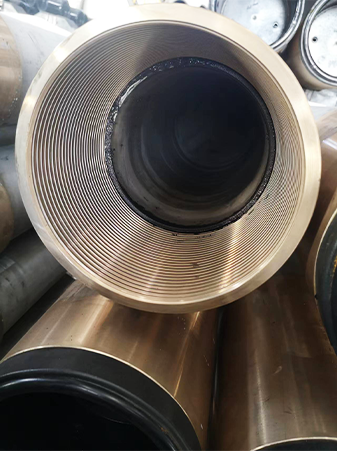- Afrikaans
- Albanian
- Amharic
- Arabic
- Armenian
- Azerbaijani
- Basque
- Belarusian
- Bengali
- Bosnian
- Bulgarian
- Catalan
- Cebuano
- Corsican
- Croatian
- Czech
- Danish
- Dutch
- English
- Esperanto
- Estonian
- Finnish
- French
- Frisian
- Galician
- Georgian
- German
- Greek
- Gujarati
- Haitian Creole
- hausa
- hawaiian
- Hebrew
- Hindi
- Miao
- Hungarian
- Icelandic
- igbo
- Indonesian
- irish
- Italian
- Japanese
- Javanese
- Kannada
- kazakh
- Khmer
- Rwandese
- Korean
- Kurdish
- Kyrgyz
- Lao
- Latin
- Latvian
- Lithuanian
- Luxembourgish
- Macedonian
- Malgashi
- Malay
- Malayalam
- Maltese
- Maori
- Marathi
- Mongolian
- Myanmar
- Nepali
- Norwegian
- Norwegian
- Occitan
- Pashto
- Persian
- Polish
- Portuguese
- Punjabi
- Romanian
- Russian
- Samoan
- Scottish Gaelic
- Serbian
- Sesotho
- Shona
- Sindhi
- Sinhala
- Slovak
- Slovenian
- Somali
- Spanish
- Sundanese
- Swahili
- Swedish
- Tagalog
- Tajik
- Tamil
- Tatar
- Telugu
- Thai
- Turkish
- Turkmen
- Ukrainian
- Urdu
- Uighur
- Uzbek
- Vietnamese
- Welsh
- Bantu
- Yiddish
- Yoruba
- Zulu
bull plug definition
Understanding the Definition and Functionality of Bull Plugs
In the world of plumbing and industrial piping systems, the term bull plug refers to a specific type of fitting used to seal the end of a pipe. This device plays a crucial role in various applications, ranging from residential plumbing to large-scale industrial operations. Understanding the definition, function, and applications of bull plugs can help both professionals and hobbyists navigate the intricacies of piping systems more effectively.
Definition of Bull Plug
A bull plug is a type of pipe closure that is designed to fit into the end of a pipe, effectively sealing it off from the environment. Its primary function is to prevent the flow of liquids or gases through an open pipe end. Bull plugs are typically used in scenarios where the pipe does not need to be opened for direct access but requires a sealed end to prevent leaking or contamination.
These fittings are often made from a variety of materials, including steel, brass, plastic, and PVC, depending on the specific application and the nature of the fluid or gas involved. The choice of material is crucial as it affects the durability, resistance to corrosion, and ability to withstand pressure.
Types of Bull Plugs
Bull plugs come in various sizes and styles, allowing for versatility in different applications. The most common types include threaded and slip-on bull plugs.
- Threaded Bull Plugs These plugs are designed with external threads that can be screwed into male-threaded pipes. This design provides a tighter seal and is easier to remove and replace.
- Slip-On Bull Plugs These fittings are meant for smooth pipes without threads. They are pushed onto the pipe end and can be secured with adhesive or clamps. Slip-on plugs are often used in applications where the system may need to be accessed frequently.
Functionality and Applications
bull plug definition

The primary function of a bull plug is to create a leak-proof seal. This is essential in various scenarios, including
2. Piping System Modifications When a section of piping is being replaced or modified, bull plugs can be used to seal off open ends to facilitate safe work environments.
3. System Testing Bull plugs are utilized to create pressure within a system while testing for leaks. They can help determine the integrity of the pipe system before it goes into full operation.
4. Preventing Contamination In industries where the cleanliness of fluids is paramount, such as food and beverage processing, bull plugs help maintain a sterile environment by keeping out contaminants.
Installation and Considerations
When installing bull plugs, several factors should be considered. The compatibility of the plug with the pipe material is paramount to ensure a secure fit and avoid damage to the piping. Additionally, understanding the operating pressure and temperature conditions is essential, as some materials may not withstand extreme conditions, leading to failures and potential hazards.
It's also important to inspect bull plugs regularly. Over time, wear and tear can compromise the seal, making it necessary to replace the plug to maintain the integrity of the system.
Conclusion
In summary, bull plugs are a fundamental component in various piping systems, serving to seal pipe ends effectively. Their utility spans across multiple industries, including residential plumbing, manufacturing, and chemical handling, ensuring that systems remain closed and fluid-tight. By understanding the definition, functionality, and appropriate applications of bull plugs, individuals can better manage their piping systems, ensuring safety and efficiency in operations. Whether it’s ensuring compliance with safety standards or maintaining the integrity of a fluid system, the role of bull plugs cannot be underestimated.
-
Tubing Pup Joints: Essential Components for Oil and Gas OperationsNewsJul.10,2025
-
Pup Joints: Essential Components for Reliable Drilling OperationsNewsJul.10,2025
-
Pipe Couplings: Connecting Your World EfficientlyNewsJul.10,2025
-
Mastering Oilfield Operations with Quality Tubing and CasingNewsJul.10,2025
-
High-Quality Casing Couplings for Every NeedNewsJul.10,2025
-
Boost Your Drilling Efficiency with Premium Crossover Tools & Seating NipplesNewsJul.10,2025







